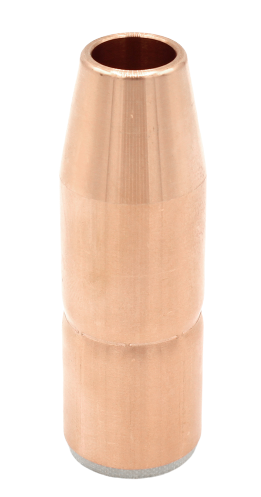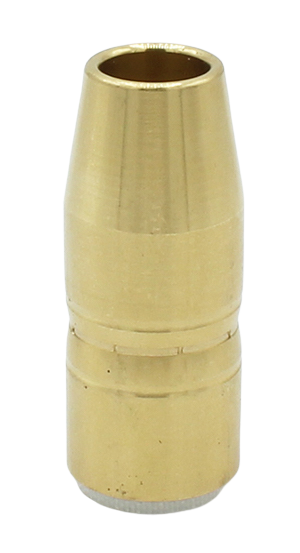Everything You Need To Know About MIG Welding Nozzles
WHY ARE WELDING NOZZLES MADE OF COPPER? AND OTHER BURNING QUESTIONS ABOUT YOUR MIG NOZZLES
The purpose for your MIG welding nozzle is pretty straightforward — it’s there to direct the gas into the weld puddle and protect your contact tip from molten metal. But beyond that, the wide variety of nozzle options available can quickly become confusing. Which is the longest-lasting? Which is the most effective? What about the price?
Some Deciding Factors
As with any consumable, the ultimate goal is to put off replacement for as long as possible. And this means matching the right nozzle with the right application. The type of project, the workpiece metal, and the welding mode can all help you start to narrow down your nozzle choices. Using a pulse mode vs. spray or short circuit, for example, will lead to many different options. So will your level of current, heat, access to the weld and the expected amount of spatter.
The type of nozzle you use can have a large impact on the quality of your work, so it’s important to choose wisely. Here’s a breakdown of some of the most common types of welding gun nozzles, what they’re made of, and how they work best.
What Are MIG Welding Nozzles Made Of?
Most often, nozzles are made of copper or brass, although some applications work well with plated nozzles as well.

Copper Nozzles
Copper welding nozzles are a good choice to protect against spatter, but it’s your only choice if you’re working on a job that requires a longer arc-on time or higher amperage (>300 amps). For even more protection against high heat (the 400 to 600 amps range), heavy-duty copper nozzles have both thicker walls and thicker insulators.
Brass Nozzles
Brass welding nozzles can be a better choice for spatter resistance — if you’re working with lower amperages, between 100 and 300 amps. They’re also the most affordable. Beware, though, that brass nozzles can fail in high-heat situations and even potentially shatter.

When used as an insert, brass can also help maintain the inner diameter of the nozzle for a longer period, which results in a longer-lasting consumable.
In some cases, you may also consider a chrome or nickel-plated nozzle. The plating is better against spatter than either copper or brass, and its heat-deflecting properties can also provide increased durability. And the metal that’s usually beneath the plate? Copper. So you get the benefits of both metals combined.
The long life of a plated MIG welding nozzle makes it the nozzle of choice for long welding applications, including robotics.
Nozzle Sizes and Shapes
The nozzle shape and bore size are important in relation to both the size of the welding joint and the current. Nozzles can come in bore sizes ranging from ⅜” to ⅞”, and as a general rule, the nozzle bore size should increase with the level of current.
Your goal in choosing both size and shape is to optimize gas coverage and reduce spatter. One method for finding the optimal nozzle is to choose the largest bore size possible in a shape that gives you the best access to the weld joint. Otherwise, you could run into issues with either job quality or nozzle life.


